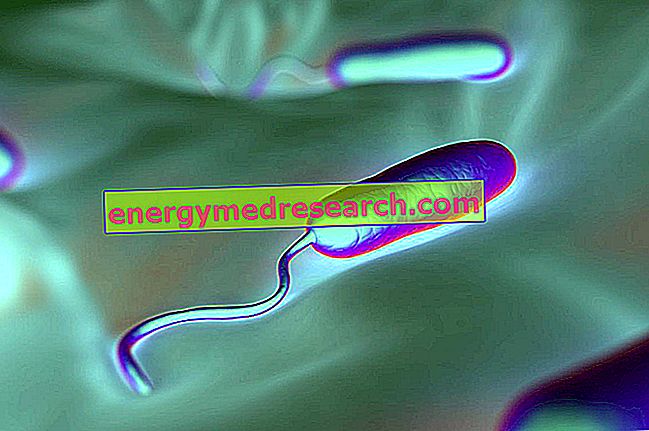Generality
American coffee (or café) (abbreviated, only "Americano") is a drink made by infusing coffee roasted and ground seeds.
It is prepared in a similar way to an espresso, but contains more water, added at a later time.

It has a different taste than the coffee extracted from the filter (drip coffee or brewed coffee), but has a similar intensity (or "strength").
The strength of American coffee varies according to the number of “shots” (shot = gesture / shot of the powder dispenser that supplies the dose needed for an espresso) and / or the amount of water added.
In Italy, American coffee is often confused with "American coffee", or coffee from the filter.
Nutritional Features
American coffee is a drink.
Contains caffeine, a methylxanthine with a stimulating effect. This, in addition to exercising a sympathetic-mimetic effect (similar to adrenaline), is considered a discreet antioxidant. However, due to the exciting mechanism, it cannot be taken in significant quantities.
It is advisable to avoid the consumption of American coffee for children, heart patients, those with severe hypertension, those suffering from anxiety and especially in therapy with anxiolytics, and for people suffering from severe gastro-intestinal disorders (Barret's esophagus caused by gastroesophageal reflux disease, acute gastritis or gastro-duodenal ulcer, chronic inflammatory bowel diseases, etc.).
Pregnant / lactating women, non-severe hypertensives and those suffering from moderate digestive disorders (gastritis, gastroesophageal reflux disease and irritable bowel syndrome, especially with diarrhea) should make limited use of it.
Recall that roasted coffee also contains unwanted combustion molecules; the most present and worrying (as it is rather widespread and easily accumulated) is acrylamide (see the article "Cook the Sugars").
By itself, American coffee does not provide a substantial amount of nutrients and calories. The total energy depends on the presence and quantity of added sugar or other caloric sweeteners (honey, malt, syrup, etc.). A moderately sweetened product contains 7-14 g each portion, or 25-50 kcal.
Sucrose intake should be moderate in case of: hyperglycemia, type 2 diabetes mellitus, hypertriglyceridemia, tendency to tooth decay and overweight.
In the United States there is also the habit of staining American coffee with cream (rich in calories, cholesterol and saturated fat). This is not recommended for those who suffer from overweight and hypercholesterolemia.
American coffee does not contain lactose, gluten or potentially allergenic molecules.
There are no contraindications for vegetarianism and veganism.
For a healthy and adult person, it is advisable to consume one, two or at most three portions a day of American coffee.
Preparation
American coffee consists of one or two espresso made from a mixture containing mainly the roasted seeds of the "Robusta" variety, coarsely ground, with the addition of more boiling water.
There does not seem to be any universal rule on the amount of water that can be added but, both in the UK and in Italy, it is between 30 and 470 ml.
In areas of Australia and South Asia, American coffee is called "long black", while the lowest and similar to an Italian espresso is called "short black". Compared to American coffee proper, long black is prepared by reversing the phases; this means that first you put hot water in the cup and then you pull the espresso from the machine.
In the western part of the United States the term "Caffè Italiano" is used to indicate a beverage consisting of espresso and water in a 1: 1 ratio (25 or 30 ml + 30 ml = 55-60 ml).
Hot water for American coffee can be taken from the espresso machine or from a separate kettle.
At home level it is good practice to use the same instrument (pulling the water before or after the espresso) to avoid the activation of another appliance or to consume other gas.
Some espresso machines have a built-in hot water dispenser (also used for tea), while others use the steam tube.
The separate water heater is considered very useful only in the commercial sphere. It allows to significantly reduce the use of the espresso machine by preventing the reduction of pressure in the circuit. Not everyone knows that to restore pressure and internal temperature, the espresso machine has a higher energy consumption than any other kettle.
uses
American coffee is chosen especially when you want to sip a long coffee-flavored drink.
American coffee (especially Italian, long and short black) can be produced with the same blend intended for strong espresso.
This happens especially when you prefer a shorter drink, obtained from just one "shot" of powder (instead of two) to avoid giving it an excessive strength or using particularly light blends based on Ethiopian or Sumatra coffee (also green or not toasted), see "Raw Green Coffee").
For preparations with the same mixture of espresso, a ratio of 1: 1 is preferred between pure drink and water, pulling the coffee directly into the cup containing hot water, in order not to compromise the stability of the cream too much.
Variations
There is a type of American called "iced American" or American iced. This is the same beverage produced with cold water instead of hot water.
The "long" is made by pulling a long espresso from the same "shot" to give a greater volume of pure drink, in turn responsible for a greater aromatic and gustatory structure than the American (diluted with hot water).
The "cream coffee" is even longer.
The "red eye" is made by diluting the espresso with "American coffee" rather than hot water. In English it is also called "shot in the dark".
Origins
"American coffee" is the characteristic name of the drink also in the country of origin (Anglo-Saxon).
The term "American", of obvious Latin origins, has been absorbed by the South American language and even by Italian, and (according to the Oxford English Dictionary) dates back to 1970.
It is conceivable that the name was born in the Second World Law, when the American soldiers landed in Italy diluted our local coffee by adding more hot water to make it look like their drink.
In the novel "Ashenden: Or the British Agent" of 1928, Somerset Maugham writes of a drink called "Americano" consumed by the protagonist in Naples during the First World War; not enough information is known to assess whether it is the same product.



